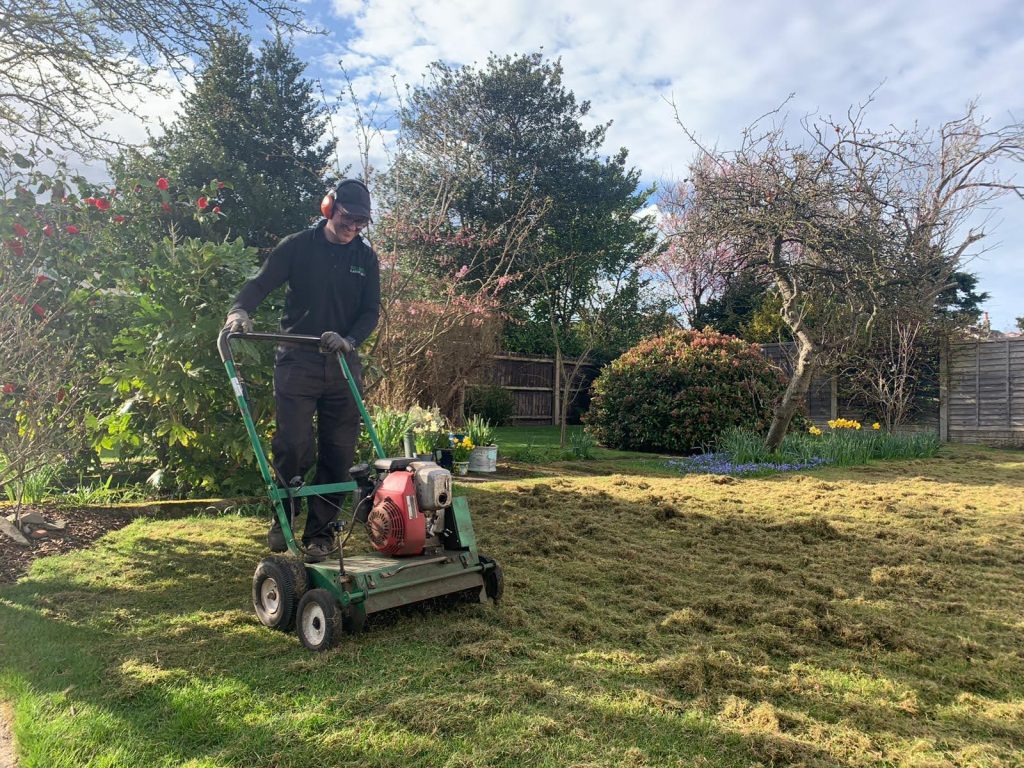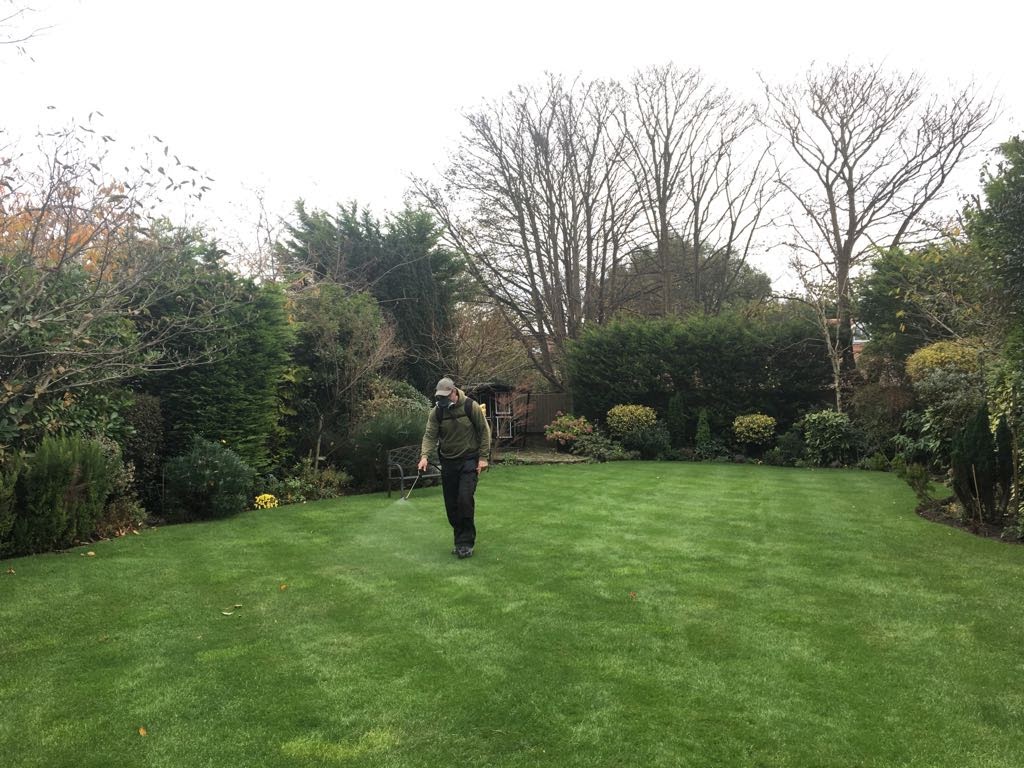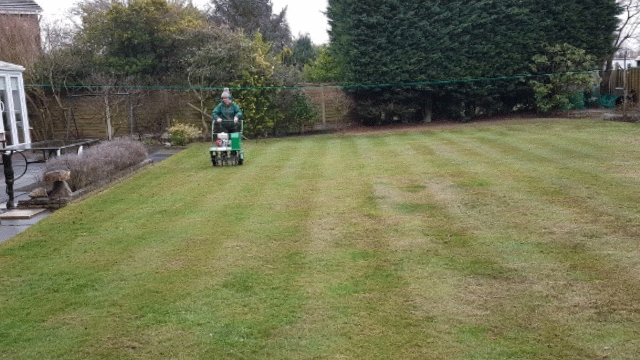-
Tackling the Moss!

After such a wet year it’s been no surprise to see an abundance of moss in the lawns. Throughout the year we’ve also seen a lot of fungal activity. Fungal diseases such as red thread, lichen and mushrooms have appeared in a large number of lawns. However, it is the moss that tends to dominate and in some cases be the biggest nuisance.
Varieties of moss
Just recently I read that, here in the UK, there are at least 600 types of moss. Around the world, there are some 10,000 varieties. Moss thrives in many lawns due to a variety of reasons. Poor drainage or lack of aeration, compacted soil, shade or infrequent mowing are among the most common reasons. If left unchecked it can slowly crowd out the grass and become a bigger problem.
Tackling Moss
Dealing with moss is a common practice that we carry out. During the months of November, December, January, February and March we spray the lawns with an iron sulphate moss control solution. This visibly darkens the moss in the lawns to slow growth. Whilst this serves to slow down the moss it does not remove or kill the moss. This can be a common misconception especially as some people call this moss killer when in reality it’s simply controlling the moss. It’s usually best to let the iron sulphate solution soak into the moss before using a scarifier or lawn rake to remove it. The best months for this are March through May and August through October. Of course, it’s important to do it when the weather conditions are right to avoid turning a simple moss problem into a ploughed field problem.
Moss Control
At Sharpes Lawn Care we carry out two moss controls a year. The reason we do this is largely due to the poor growing conditions in the area. A lack of depth to the top layer (root zone) often means that good nutrients leach away more quickly. A nutrient deficient lawn very often yields moss whilst in this weakened state.

Polytrichum is a harder moss to deal with. This moss is like a little spikey tree and ideally needs completely scarifying out the ground before re-seeding with grass seed.
Aeration
Lawn aeration is also very beneficial in helping to prevent moss build up. As the cores of earth are removed, air and surface water can go into the holes. This helps by not allowing surface water to build up and saturate the lawn. The air helps to dry the lawn slightly too.

Whatever your needs, Sharpes Lawn Care are here to help.
For more information or to get a free quote email rob@sharpeslawncare.co.uk
6 Longfield, Formby L37 3LD, rob@sharpeslawncare.co.uk
